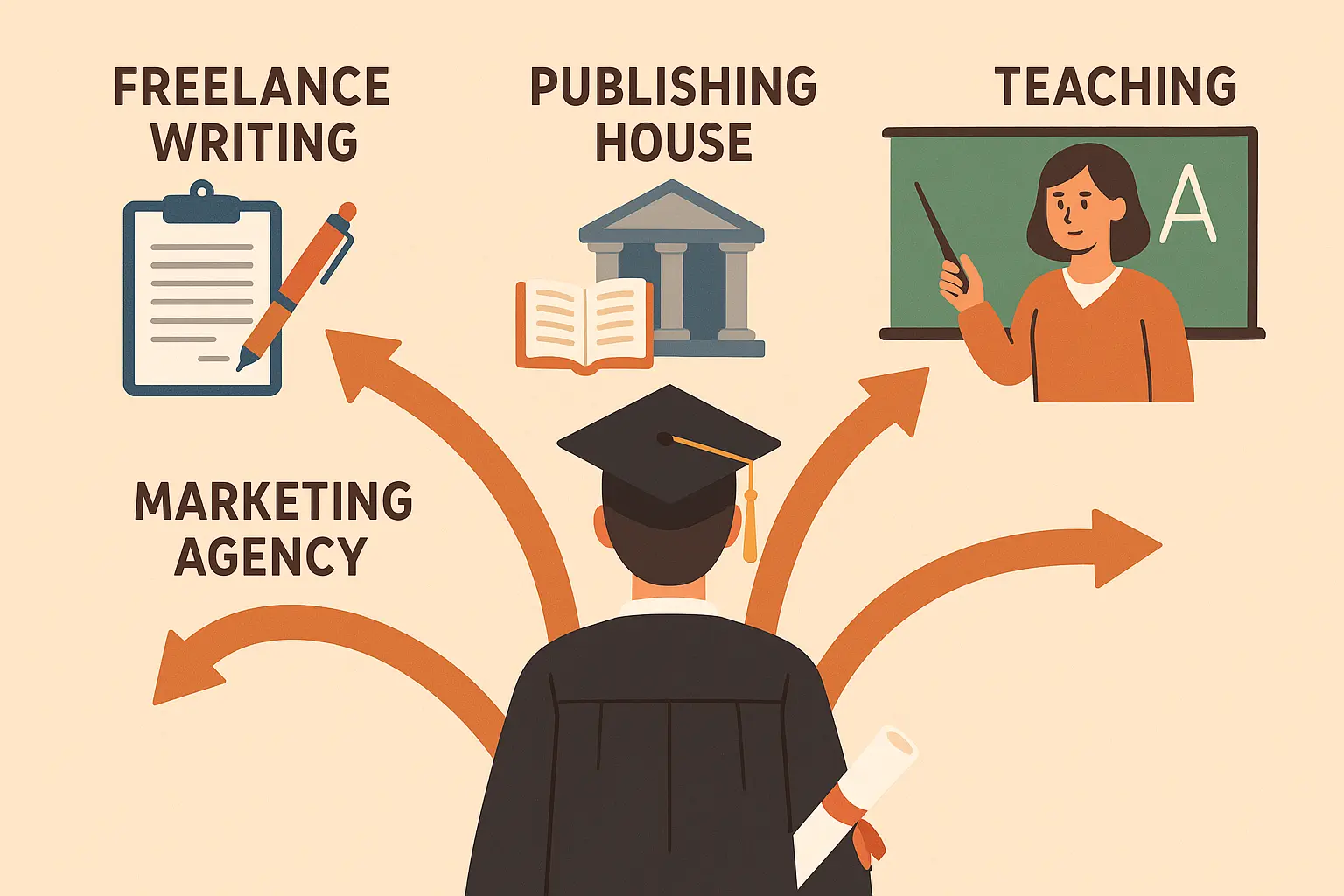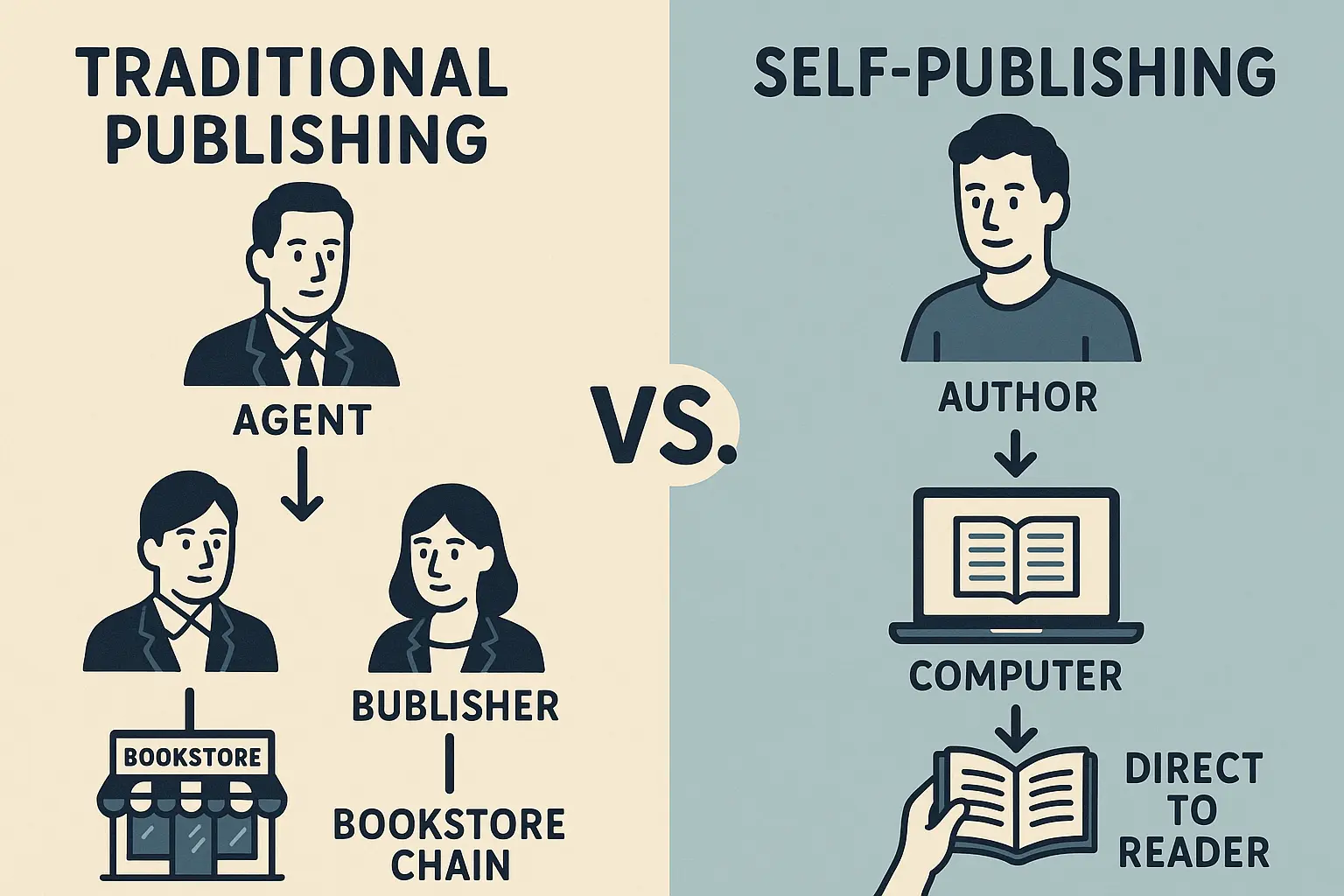When I started my writing degree, my advisor told me it would take four years. She forgot to mention the year I’d spend building a portfolio that didn’t suck, the six months learning WordPress because apparently knowing how to write isn’t enough anymore, and the soul-crushing reality of submitting to literary magazines that take eight months to send rejection letters.
Look, nobody’s going to tell you this stuff during orientation week, so I’m going to give it to you straight – including all the extra time that’ll either set you up for success or leave you wondering why you didn’t just become an accountant.
Writing 3,000 words can take anywhere between six and 24 hours depending on the topic and research requirements, according to “How to Write a 3000 Word Essay in a Day” by Save the Student. This reality check about writing speed becomes crucial when you’re planning your degree timeline, as most writing programs involve thousands of pages of coursework, portfolio development, and thesis writing that extends far beyond classroom hours.
Table of Contents
- The Multi-Dimensional Time Investment Nobody Warns You About
- Fast-Track Options That Actually Work
- What Happens After You Graduate (Spoiler: You’re Not Done Yet)
- The Tech Skills That’ll Add Months to Your Timeline
- Final Thoughts
TL;DR
- Traditional writing degrees take 2-4 years, but building a competitive portfolio and career-ready skills will add at least another year to your timeline
- Fiction writers, buckle up for 3-5 years of writing terrible first drafts and rejection letters while non-fiction writers can actually make money in 18-24 months
- Internships and networking can add 6-18 months to your degree but they’re the difference between getting hired and living with your parents forever
- Fast-track programs can cut your time to 18-30 months if you’re super disciplined (spoiler: most people aren’t)
- After graduation, expect another 12-24 months of figuring out how the real world works before you’ll see actual professional stability
- You’ll spend 6-12 months learning digital stuff your professors never heard of because the internet keeps changing the rules
The Multi-Dimensional Time Investment Nobody Warns You About
Everyone talks about credit hours and semesters, but that’s like saying a marathon is just 26.2 miles – technically true but missing the whole picture. The real timeline for getting a writing degree starts before you even enroll and continues long after you walk across that stage. I’m talking about portfolio building, internship hunting, and career prep that can easily double your expected timeline if you’re not prepared for it.
Understanding the true time investment is crucial, especially when you consider that whether a college degree is worth the investment depends largely on how well you use every month of your program to build career-ready skills.
Building Your Portfolio While You’re Still Learning
Here’s what they don’t tell you: your writing portfolio doesn’t magically appear when you graduate. It needs to start developing from day one, and this process determines whether you’ll land that dream job or spend months after graduation scrambling to build credibility while eating ramen and explaining to your parents why you’re not employed yet.
Just as students need to understand how various factors can extend any degree timeline, writing students must account for portfolio development time that happens alongside their coursework, not after it.
Fiction vs. Non-Fiction: Two Completely Different Universes
Here’s the reality check nobody gives you: If you want to write fiction, you’re signing up for a 4-6 year commitment minimum. You’ll need to write at least 2-3 complete manuscripts (and yes, your first one will probably suck), get published in some literary magazines that pay you in “exposure,” and develop what professors call “your voice” – which is code for “write a bunch of bad stuff until you figure out what sounds like you.”
Non-fiction writers, you got lucky. You can be job-ready in about 2-3 years if you hustle. Write 15-20 articles on different topics, learn to interview people without being weird about it, and master the art of making boring topics sound interesting. Content marketing folks have it easiest – 12-18 months and you’re golden, as long as you can prove your stuff actually works. Save screenshots of everything because “I increased engagement by 40%” sounds way better than “I think people liked my posts.”
Why such a brutal difference? Fiction demands that you develop an authentic voice, master complex narrative structures, and create compelling characters. These skills can’t be rushed, no matter how many writing books you read. Non-fiction writing focuses more on research, clarity, and audience engagement – skills that respond well to structured learning and practice.
Take Sarah, a fiction MFA student I know who started her program in 2021. She spent her first year learning craft basics and crying over workshop feedback, her second year developing her voice through more workshop feedback and crying, and her third year (yes, she extended her program) refining a complete manuscript. Even after graduation in 2024, she’s still submitting to literary magazines and working on her second novel. Compare that to Mike, who focused on content marketing – he built a professional portfolio during his 18-month program and landed a full-time position within three months of graduation. Guess which one is still living with roommates?
Mastering Digital Platforms (Because It’s Not Optional Anymore)
Remember when being a writer meant just, you know, writing? Those days are dead. Now you need to be part writer, part web developer, part social media manager, and part SEO wizard. I spent three months just figuring out why my blog posts weren’t showing up on Google (spoiler alert: I had no idea what keywords were).
WordPress will become your frenemy. You’ll spend hours trying to figure out why your formatting looks perfect in the editor but turns into a hot mess when you hit publish. And don’t get started on learning SEO – it’s like they created a whole new language just to torture writers. This digital literacy requirement represents a significant shift in what it means to be a professional writer today, and mastering these platforms takes 6-12 months of dedicated training.
The Internship Reality Check
About those internships – yeah, they’re basically mandatory now, even though half of them are unpaid and involve making coffee for people who peaked in college. But here’s the thing: that unpaid internship at the local magazine taught me more about real writing deadlines than two years of workshop classes.
These experiences can add 6-18 months to your degree completion, depending on how you structure them. Summer internships? Part-time commitments during the school year? Gap semesters? Each approach has different timeline implications, and honestly, each one will teach you something different about how much you don’t know.
Remote vs. In-Person: The Time Investment Difference
Remote internships sound great until you realize you’re spending more time in Zoom meetings than actually writing. But hey, at least you can wear pajama pants to work. The downside? They typically require 20-30% more time investment because everything takes longer when you’re communicating through screens instead of quick hallway conversations.
In-person internships are exhausting but you’ll actually learn how real offices work, which is valuable since most writing programs exist in this weird academic bubble where deadlines are suggestions and everyone cares deeply about literary theory.
Industry-Specific Preparation: Publishing vs. Marketing Timelines
Your career target dramatically affects your preparation timeline, and nobody explains this during freshman orientation. Students aiming for traditional publishing need 12-18 months of manuscript preparation and literary magazine submissions – which means navigating submission cycles, rejection letters, and revision processes that move slower than continental drift.
Marketing agencies care more about your ability to write compelling copy, understand analytics, and adapt your voice to different brands. You can be job-ready within 6-9 months of focused training if you actually pay attention to what converts and what doesn’t.
Pre-Graduation Checklist for Publishing Track:
- ☐ Complete 2-3 polished short stories or 50+ pages of novel manuscript (that don’t make readers cringe)
- ☐ Submit to 15-20 literary magazines per piece (and develop thick skin for rejections)
- ☐ Attend at least 2 major writing conferences (and actually talk to people, not just collect free pens)
- ☐ Build relationships with 3-5 published authors (who aren’t your professors)
- ☐ Research and query 10-15 literary agents (and learn to write query letters that don’t suck)
- ☐ Maintain active social media presence focused on writing (not just complaining about writing)
- ☐ Join professional organizations (AWP, genre-specific groups)
The Conference Circuit Investment
Professional writing conferences provide invaluable networking and learning opportunities, but attending 3-4 major conferences during your degree requires strategic planning. When you factor in preparation and follow-up activities, you’re looking at 6-12 months of additional time investment that most students underestimate.
Conference preparation isn’t just booking flights and hoping for the best. You’re researching attendees, preparing pitch materials that don’t sound desperate, scheduling meetings, and following up with new connections afterward. Each conference represents weeks of preparation and months of follow-up networking. But here’s the thing – it’s where real connections happen, not in your dorm room.
Fast-Track Options That Actually Work
Alternative degree structures are reshaping traditional timeline expectations, and some of them actually work if you’re the right kind of student. Competency-based programs, intensive summer formats, and hybrid online-residency models can dramatically reduce completion time – but they’re not for everyone.
Skills-First Programs That Cut Through the Fluff
These fast-track programs are perfect if you’re the type of person who actually reads instruction manuals and finishes Netflix series. They’ll let you test out of classes if you can prove you already know the stuff, which sounds amazing until you realize you have to document everything you’ve ever learned about writing.
Programs focusing on demonstrated writing competencies rather than seat time can reduce your degree completion to 18-30 months. They don’t care if you learned something in a classroom or through freelance work. Can you write compelling copy? Understand narrative structure? Analyze literature effectively? Prove it through your portfolio and move on to the next competency.
Similar to how bachelor’s degree timelines can vary significantly based on program structure, writing degrees offer multiple pathways that can dramatically affect completion time.
According to the U.S. Bureau of Labor Statistics, jobs for bachelor’s degree holders will grow 7.2% from 2023 to 2033 — faster than jobs for workers without a college degree, as reported by Southern New Hampshire University. This growth projection makes accelerated degree programs increasingly attractive for students who want to enter the competitive writing job market quickly while still meeting employer degree requirements.
Converting Your Experience Into Credits
Journalism background? Marketing experience? Freelance writing portfolio? You might reduce your degree time by 12-18 months through prior learning assessments and challenge examinations. I watched my friend spend two months creating a portfolio just to skip one class. Sometimes the shortcut takes longer than the regular route, but if you’ve got real experience, it’s worth the paperwork nightmare.
The process involves documenting your professional experience, creating portfolios that demonstrate college-level learning, and sometimes taking challenge exams. It’s paperwork-intensive but can save you significant time and money – assuming you can prove you actually learned something from all those freelance gigs.
Jennifer had worked as a freelance copywriter for five years before deciding to get her bachelor’s in communications. Through her university’s prior learning assessment program, she documented her client work, campaign results, and professional development courses. The portfolio review process took three months, but she received 36 credit hours toward her degree – essentially eliminating her entire first year of coursework and saving $15,000 in tuition.
Low-Residency Programs: The Working Professional’s Path
Low-residency programs require 2-3 years with intensive 10-day residencies twice yearly, allowing working professionals to maintain careers while completing degrees. Sounds perfect, right? Well, the total time investment often exceeds traditional programs due to the intensive independent study requirements between residencies.
These programs work well if you’re disciplined and can handle extended periods of independent work without someone checking on you every week. Between residencies, you’re essentially running your own graduate seminar with faculty guidance – which is either liberating or terrifying, depending on your personality.
For students considering alternative timelines, understanding the factors that control master’s degree timelines becomes crucial when evaluating low-residency MFA options.
Low-residency MFA programs typically involve a minimum of two years with ten-day intensive residencies on campus per semester, as noted by Aspiring Author. The time between residencies involves remote mentorship and independent writing projects, which can extend the practical completion timeline significantly for students who struggle with self-directed learning.
The Independent Study Challenge
Between residencies, you work on 4-6 month independent writing projects with faculty mentors, and this requires exceptional time management and self-discipline that 30% of students underestimate. Without regular classes and peer interaction, maintaining momentum becomes your responsibility. Some students thrive in this environment; others struggle without the structure of traditional classroom settings and regular deadlines.
Independent Study Success Template:
- Week 1-2: Review residency notes and establish project goals (and actually stick to them)
- Week 3-6: Complete initial research and outline development
- Week 7-10: First draft completion (aim for 25% of semester project)
- Week 11-14: Mentor consultation and revision planning
- Week 15- 18: Major revisions and second draft completion
- Week 19-22: Final polish and submission preparation
- Week 23-24: Project submission and next semester planning (and maybe a vacation)
What Happens After You Graduate (Spoiler: You’re Not Done Yet)
Graduation day feels like the finish line, but it’s actually more like the starting gun. You’ll spend the next year figuring out that everything you learned in school needs to be translated into real-world skills that actually pay bills.
The true “completion” of a writing degree extends 12-24 months beyond graduation as new graduates navigate freelance client acquisition, job searches, or publication submission cycles. This post-graduation period often determines long-term career success more than your GPA ever will.
After completing your writing degree, you’ll need to protect your credentials just as any other professional qualification. Services for diploma replacement become important when you need backup copies for your portfolio or professional presentations.
Building a Freelance Writing Business From Scratch
Let’s talk money, because your professors won’t. Establishing a sustainable freelance writing practice takes 6-18 months post-graduation, and income stability? That usually doesn’t happen until months 12-24 of active client development. That first freelance client who pays you $20 for a 1,000-word article? You’ll take it and be grateful. Six months later, you’ll realize you were basically paying them to let you work.
Writing programs teach you to write, not to run a business. You’ll learn about invoicing, client management, project scoping, and marketing your services through trial and error. Each mistake costs time and money, and there will be plenty of both.
From Beginner Rates to Professional Pricing
You’ll start making about as much as a decent babysitter – maybe $15-25 an hour if you’re lucky. I know, you have a degree and everything . But here’s the brutal truth: nobody cares about your GPA when you can’t write a subject line that gets opened.
Getting to $50+ an hour takes time, patience, and learning to say no to clients who want “exposure” instead of payment. Pro tip: exposure doesn’t pay student loans. This rate progression depends on building expertise, developing a strong portfolio, and learning to communicate your value effectively to clients – skills they definitely don’t teach in Creative Writing 101.
| Experience Level | Typical Hourly Rate | Monthly Income Range | Time to Achieve | Key Skills Required |
|---|---|---|---|---|
| New Graduate | $15-25/hour | $800-1,500 | 0-6 months | Basic writing, showing up on time |
| Developing Writer | $25-40/hour | $1,500-3,000 | 6-12 months | Niche expertise, client testimonials that don’t suck |
| Professional Writer | $40-60/hour | $3,000-5,000 | 12-18 months | Strategic thinking, proven ROI |
| Expert/Specialist | $60-100/hour | $5,000-8,000+ | 18-24 months | Industry authority, premium positioning |
The Publication Game: Patience Required
Literary publication involves submission cycles of 6-18 months per piece, and most successful writers need 2-5 years post-graduation to achieve consistent publication in respected venues. Literary magazines receive thousands of submissions for limited spots. Your work might be excellent but still face rejection due to timing, theme issues, or editorial preferences. Persistence and patience become as important as writing skill.
The application process for MFA programs can take anywhere between a couple of weeks and six months, and most people apply as early as a year out from their intended starting school year semester, according to Aspiring Author. This extended timeline for just getting into advanced writing programs demonstrates how the entire writing education journey requires long-term planning and patience at every stage.
Traditional Publishing vs. Self-Publishing Timelines
Traditional publishing requires 2-5 years from manuscript completion to bookstore shelves, while self-publishing allows market entry within 3-6 months but demands additional marketing and business development skills that nobody teaches you.
Traditional publishing involves finding an agent (good luck), securing a publisher (even more luck), and navigating production timelines that move at glacial speed. Self-publishing requires learning cover design, formatting, marketing, and distribution – essentially running a small publishing company while also being the creative talent.
Consider debut novelist Maria, who finished her manuscript in January 2022. She spent six months querying agents, landed representation in August 2022, and her agent sold the book to a publisher in March 2023. With editing, production, and marketing timelines, her book won’t hit shelves until fall 2024 – nearly three years from completion. Meanwhile, her critique partner David self-published his novel in April 2022, just three months after finishing his manuscript, but spent the next two years learning marketing, building an author platform, and managing all business aspects himself while still trying to write his next book.
The Tech Skills That’ll Add Months to Your Timeline
Modern writing degrees now incorporate AI writing tools, social media marketing, podcast production, and video content creation, adding 6-12 months of technical skill development that previous generations of writers never needed. This technological evolution represents a fundamental shift in professional writing requirements that extends traditional degree timelines and makes you question why you didn’t just learn accounting.
Learning to Work With (Not Against) AI Writing Tools
AI is everywhere now, and fighting it is like trying to stop the tide with a spoon. The trick is learning to use it without letting it turn your writing into generic robot speak. I spent weeks playing with ChatGPT before I figured out how to make it actually helpful instead of just… weird.
Learning to effectively collaborate with AI writing tools while maintaining authentic voice and avoiding over-dependence requires 3-6 months of dedicated practice and ethical framework development. The goal isn’t to let AI write for you – it’s to use it like a really smart research assistant who never gets tired of answering stupid questions.
Keeping Your Voice Authentic in an AI World
The temptation to rely too heavily on AI-generated content is real, especially when facing tight deadlines and client demands. Learning to maintain your authentic voice while leveraging AI efficiency requires conscious effort and regular self-evaluation. Just don’t get lazy and copy-paste everything it gives you, because readers can tell, and it’s painfully obvious.
AI Integration Checklist for Writers:
- ☐ Establish personal ethical guidelines for AI use (and actually follow them)
- ☐ Practice using AI for research and ideation only
- ☐ Develop voice consistency checks for AI-assisted content
- ☐ Learn to edit AI suggestions to match your style
- ☐ Create templates for common AI-assisted tasks
- ☐ Stay updated on industry AI policies and best practices
- ☐ Build portfolio examples showing AI collaboration process
Multi-Platform Content Creation Skills
Today’s writing graduates must adapt content for blogs, social media, email newsletters, podcasts, and video scripts, requiring 6-9 months of specialized training in platform-specific writing conventions. Each platform has unique requirements for tone, length, and engagement that traditional writing education doesn’t typically cover.
Each platform has its own rules that change faster than fashion trends. Twitter demands brevity and engagement. LinkedIn requires professional tone without being boring. Email newsletters need compelling subject lines that don’t sound like spam. Podcast scripts must sound natural when spoken, not like academic papers. Video content needs visual elements that complement your words.
Understanding Analytics and Performance Metrics
Modern writers need to understand what makes content perform, and it’s not always what you think. Click-through rates, time on page, social shares, email open rates – these metrics inform content strategy and demonstrate your value to employers or clients. Understanding engagement metrics, conversion rates, and audience analytics has become essential for professional writers, requiring 3-6 months of dedicated study in digital marketing principles and measurement tools.
This data-driven approach to writing represents a significant shift from traditional creative writing education, where success was measured in workshop feedback and literary magazine acceptances, not conversion rates and engagement metrics.
Have you been putting off getting your writing degree because you’re worried about the time commitment? The reality is more complex than most people realize, but understanding the full timeline helps you plan effectively and set realistic expectations. Whether you choose a traditional four-year program or an accelerated competency-based option, success depends on starting your professional development early and staying committed to continuous learning.
After investing years in your writing education and building your professional portfolio, protecting your credentials becomes crucial. ValidGrad understands that your writing degree represents the foundation of your professional credibility. Whether you need a backup copy for your home office, a replacement for a damaged diploma, or multiple copies to showcase across different professional settings, ValidGrad provides high-quality diploma reproductions for professional display in days rather than the weeks or months required through traditional institutional channels.
Final Thoughts
Look, I’m not going to lie and say this journey is easy or quick. You’ll have moments where you wonder if you should have listened to your parents and become a nurse. Getting a writing degree takes longer than the official timeline suggests, but every extra month you invest in building real skills pays off in your career. I’ve seen too many graduates rush through their programs only to spend years catching up on the practical skills they should have developed during school.
The writing industry keeps evolving faster than your professors can update their syllabi, and your education timeline needs to account for that evolution. AI tools, digital platforms, and changing reader expectations mean today’s writing graduates need broader skill sets than previous generations. Embrace the extended timeline – it’s preparing you for a career that didn’t exist when writing programs were first designed.
But here’s the thing – if you actually love writing and you’re willing to put in the work (all of it, including the boring business stuff), you can build something pretty amazing. Just remember: every successful writer you admire went through this same messy, complicated process. They just don’t talk about the awkward parts in their interviews.
Start building your portfolio early, take advantage of internship opportunities even if they involve making coffee, and don’t underestimate the time needed for post-graduation career development. Your writing degree is an investment in a career that can span decades, so taking the time to do it right makes financial and professional sense. Plus, you’ll have great stories to tell at parties about that time you spent three months learning WordPress and questioning all your life choices.










